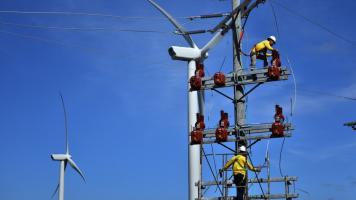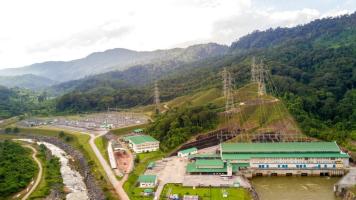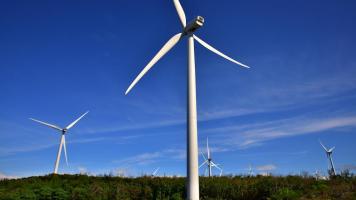A substation in Viet Nam that receives and processes energy from wind farms. Photo credit: ADB.
The lack of grid connection and capacity is a major bottleneck to a smooth energy transition, and it is faced by countries across the world.
The readiness of power grids to absorb and transfer low-carbon electricity efficiently will be key to achieving Southeast Asia’s decarbonization goals.
According to a new ADB report, grid infrastructures in Asia and the Pacific, including in Southeast Asia, are not ready for accelerating the energy transition. There is limited interconnectivity of power systems. “Supply quality and high overall technical losses are manifestations of insufficient grid preparedness,” it adds.
The lack of grid connection and capacity is a major bottleneck to a smooth energy transition, and it is faced by countries across the world. The cost of laying down the global network of power cables runs into the trillions of dollars, roughly 30% of the investment required by the transition.
Improve interconnectivity
In Asia and the Pacific, inadequate investment in power grids is holding back developing countries from embracing the full benefits of an energy transition, including enhanced energy security, the creation of millions of green jobs, and the expansion of electricity access.
The report calls for the urgent expansion of interconnected and modernized grids—both to keep up with rising energy demand and to integrate intermittent renewable energy sources across the region. It finds that while differing national characteristics require countries to forge their own clean power trajectories, in-country connectivity and regional interconnections can provide a universal boost to economic efficiency and power affordability.
In Southeast Asia, regional interconnection is a key strategy in strengthening energy security and transitioning to renewables through efficient resource sharing. The Association of Southeast Asian Nations (ASEAN) plans to integrate the national power systems of the 10 member states by 2045 to enable power trade. Fully integrated grid operations of the ASEAN Power Grid is estimated to cost more than $16 billion. As of 2022, nine of the planned 18 interconnection projects are operational. This includes the ADB-supported Trans Borneo Power Grid Sarawak–West Kalimantan Interconnection Project.
Aside from accelerating interconnectivity, the report identifies three other options countries can take to improve grid infrastructure capabilities and improve supply quality. These are to enhance grid planning practices, promote the adoption of digital solutions, and develop effective financing mechanisms.
Measuring transition readiness
Conducted in collaboration with the World Economic Forum (WEF), the report is ADB’s first to measure regional countries’ ability to transform their energy systems and uses a readiness framework based on the WEF’s Energy Transition Index. The energy transition readiness assessment (ETRA) for developing Asia and the Pacific “evaluates a country’s capacity and preparedness to create an equitable, sustainable, and secure energy system that creates value for society and delivers on net-zero ambitions.”
Although the People’s Republic of China leads on most dimensions, the report concludes that Georgia, Malaysia, and Thailand have improved their regulatory frameworks to support a clean energy transition. Meanwhile, Bangladesh, India, and Indonesia have led the region in expanding electricity access to over 1 billion people since 2010.
ETRA results also show that some countries in Southeast Asia are among those best positioned to increase participation in regional and global clean energy supply chains. These economies have more transition-friendly conditions in terms of policies and regulations, investment climate, infrastructure, and technology and innovation ecosystems.


